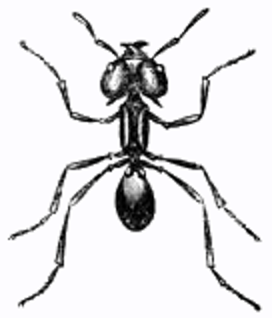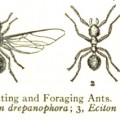Insect imntges are among the most popular image types here on Reusable Art. This, thankfully not life-sized ant drawing, dates back to around 1872. Ornithologist Louis Figuier (1819-1894) originally wrote The Insect World in French and F. Martin Duncan is credited with editing it. The book didn’t say if Duncan translated it but it seems safe to make that assumption.
This drawing is labeled as being a Brazilian umbrella ant or Atla cephalotes.
I found several mentions of the Brazilian umbrella ant in literature from before 1900 but not any modern works that use either the common or scientific name. I suspect, there was either a typo in the name or it has changed to Atta cephalotes. Atta cephalotes is identified as a species of leaf cutter ant.
The old name is fairly easy to understand. These ants were first discovered in Brazil. They were called umbrella ants, not for their giant heads but for the way they carried leaves. The ants typically cut out round pieces of orange and coffee tree leaves. They carried the leaves back to their nest in their jaws in an upright position. The leaves appeared to form an umbrella over their head to protect the ant from the heat of the sun.
The ants don’t actually eat the leaves. They grow fungus in their colonies and use the leaves to cultivate the fungus. How clever is that?
Too bad this vintage ant drawing doesn’t include the little guy carrying a leaf segment. But this way we see an ant drawing that shows the large head, mandibles and body structure of the insect.

This image is copyright free and in the public domain anywhere that extends copyrights 70 years after death or at least 120 years after publication when the original illustrator is unknown.

